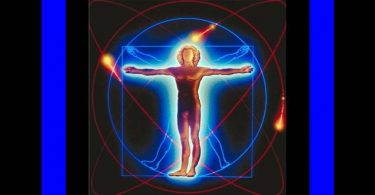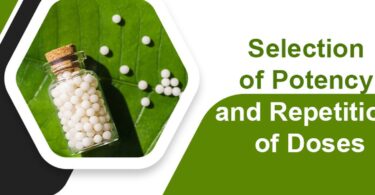Case taking is all about extracting symptoms and symptoms have to have a quality to them and be the FACTS of the case. The aim is to get a minimum number of symptoms with the maximum importance and relevance to the case. Not so few that they become too exclusive but not so many as to be confusing – I like to aim for a maximum of 10.
Confining yourself to:-
Location
Sensation
Extension
Modalities
Causation
Concomitants
should suffice for all cases.
Taking the totality of the case doesn’t mean including every single detail of the person’s life, it merely means the totality of the signs and symptoms pertaining to the diseased state. Sometimes this will include a fusion or borderline states between what is healthy and what is diseased – what some call constitutional prescribing. Although being able to rank symptoms properly hasn’t much to do with how to take a case, it is still relevant to say that the case taking has to be good so that the case analysis can be good and case analysis has to include the ranking of symptoms.
There are various methods of doing this but separating symptoms into the following categories is extremely valuable and practical. Some homeopaths create graphs, or columns, or shapes for these symptoms, some do it in their heads 🙂
1) Physical Generals – if the case has physical symptoms and they are part of the presenting complaint then these are very important in my opinion and often not given enough consideration.
2) Mental and Emotional Generals – if these are strong and dominate a case then obviously they are important but emotional symptoms often present an extremely grey area for some prescribers.
3) Particulars these are the symptoms that are important to the client,those that are prefixed by “My…”. These symptoms can be very meaningful because the client will be relating to them intimately and are often the symptoms they will talk most about. I place a lot of emphasis on these symptoms because of this and they often lead you into the inner sanctum of a case, where all the intriguing symptoms are.
4) Strange, rare and peculiar – the most important symptoms of all. Striking, uncommon and peculiar symptoms can appear absolutely anywhere within the case. It might be the modalities of a case, the sensations, the location (if not generalised but specific). They can be cravings or aversions, dreams or fears.
They might appear as seemingly small symptoms but nonetheless significant. For example, a burning sensation which is >>> heat; a dry mouth that has no thirst; nausea which is NOT >>> for vomiting; a fever that has no thirst, etc. Likewise, a single characteristic symptom can dominate a case to such a degree it virtually leads the case easily to the simillimum. For example, hands covered in warts; cold hands alternating with cold feet; a pain in the heart only in the late afternoon; a weakness of memory for dates only, etc.
How you recognise these strange symptoms is largely common sense because their oddity factor should shine through but you can’t always depend on the client offering all this on a plate – you have to ask questions and follow through on all information offered.
Unfortunately, what sometimes happens, is that the prescriber turns a relatively ordinary sx into a strange one, giving it the wrong ranking and letting it define a case so it is necessary that one learns how to see the 3 main dimensions to a symptom:-
The degree of peculiarity
The location in the hierarchy of the organism
The intensity of the symptom as expressed by the client.
5) General and undefined symptoms or vague and indefinite symptoms should not be included directly in the case but put to one side. These types of symptoms might be indications of a deeper layer or less active miasmatic influence, they might also be meaningless, they might even be the symptoms which develop after the first prescription which in turn will shed light on the case, but initially, they should be left to one side.
6) Confusing symptoms, due to drugs, poorly elicited because of the client¹s state, damaged by previous remedies or suppression in some way should also be put to one side.
7) Symptoms that are common to any specific disease diagnosis also need to be put into a context. If such a common symptom exists but it completely dominates a case then this symptom gains importance, e.g. the debilitating and aching bones throughout the body that one often experiences with ‘flu, or flaking skin in an eczema case – common enough but if it dominates then it is important.
As you proceed through a case the client will either spontaneously offer information or will answer through pertinent questions. Either way, there will be a natural intensity to all symptoms within a case and you need to find a way of grading these symptoms as you go through the case. Some use an underlining system, others a numerical system – thus:-
4 underlines = volunteered information which has intensity and emphasis
3 underlines = the perception of the client of their own condition
2 underlines = volunteered information but that which doesn’t have so much intensity or emphasis
1 underline = information that is even more vague but still distinct enough to be called a symptom
No underlines = vague information probably from direct questioning – “sometimes”, “I don’t really know”, too far back in the past and not relevant now, etc etc. If you ask someone if they are scared of spiders and they have to think about it but finally say “yes”, forget it, you just cannot include information like that.
I tend to think that the presenting complaint of any case is a metaphor for the whole case and thus I place a lot of importance on the presenting complaint – it represents the facts of the case, the point at which the client has come to see you, it is the point of no return. It is here you find the most vital symptom that have the highest ranking and that relate outwards towards the rest of the case but the further outwards you go the lower the ranking gets for most symptom.
Always be guided by what needs to be cured.
Joy Lucas






